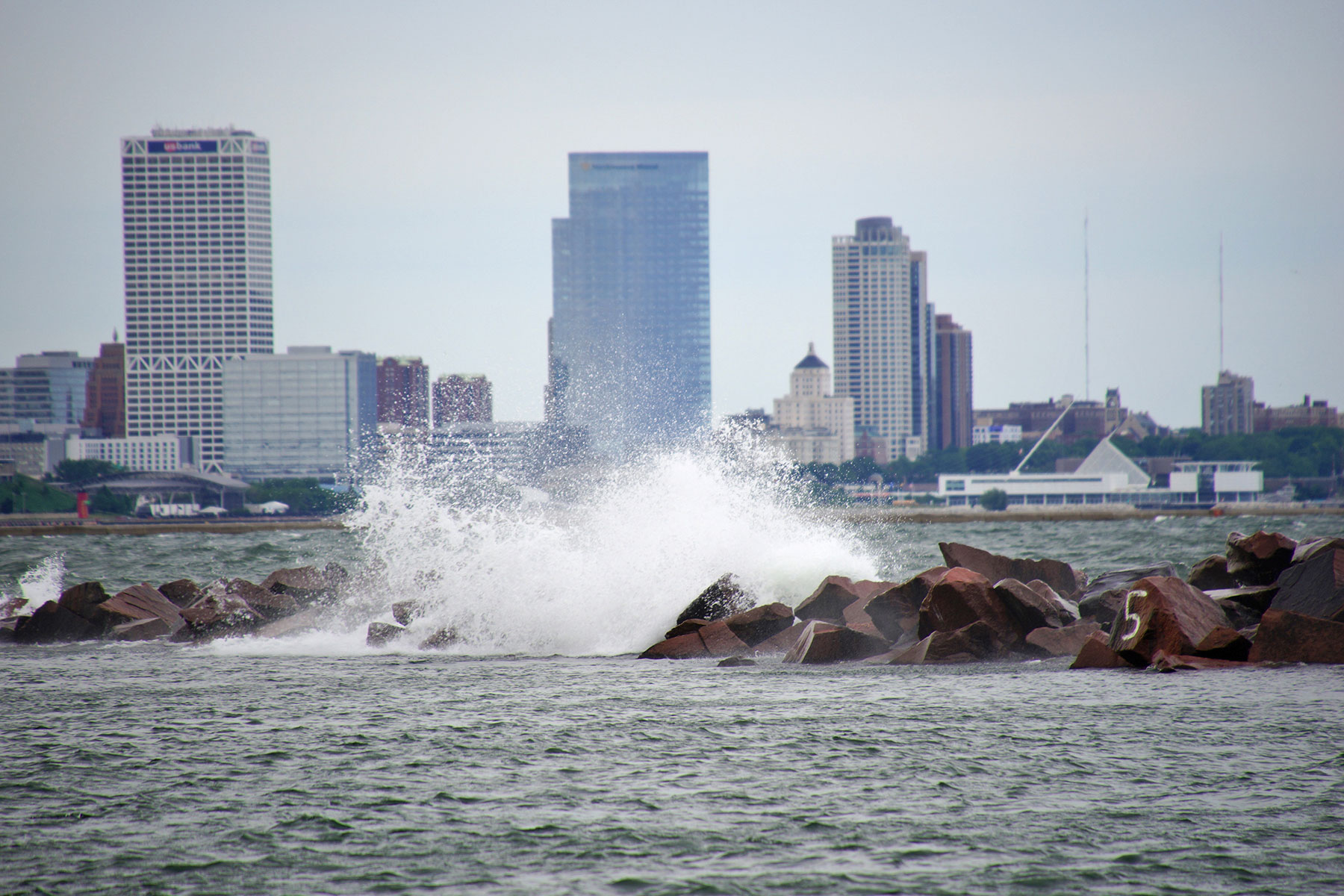
The U.S. Army Corps of Engineers- Detroit District, recently urged individuals to use caution around Great Lakes structures and to be aware of safety hazards resulting from high water levels.
Many accidents and incidents near harbor structures occur during the turbulent weather seasons of fall and winter, but higher than normal water levels pose safety threats year round. The lakeshore attracts local residents and visitors alike. Strong winds, storms and high water levels can bring powerful impacts to the shoreline and harbor structures.
“It is likely that water levels on lakes Michigan and Huron will set new monthly mean record high levels over the next couple of months,” said John Allis, chief of the Great Lakes Hydraulics and Hydrology Office, Detroit District. “This sets the stage for coastal impacts and damages in 2020 similar to, or worse than, what was experienced last year.”
The Great Lakes are continuing to experience higher than normal water levels. High water levels create safety hazards, such as submerged breakwaters, dangerous rip currents and electric shock risks.
Many piers, docks and portions of breakwaters are currently under water and not visible above the water surface. Winds often affect local water levels, pushing them dramatically higher during storms and windy days. Structures that may be visible on a calm day may not be visible on a windy day.
Although breakwater structures were primarily built for navigation, they are also often used for recreation. Walking along breakwater structures can be hazardous – uneven slippery surfaces, especially when doubled with wave action, increase the risk of falling in to the water. Large armor stones may be hidden below the water surface and there is risk of getting wedged between armor stones or striking a stone with one’s body, should an individual fall or jump into the water.
Water circulation can differ with changes in water levels. When water levels, wind and waves increase, so does the risk of dangerous currents. Rip currents and structural currents are a common cause of drowning. Rip currents are fast-moving, narrow currents of water that flow away from shore. Structural currents can occur at fixed structures such as breakwaters and piers, and flow away from shore parallel to the structure. To get out of a rip current, it is advised to “Flip, Float, Follow” until the current subsides to save your energy and reduce your risk of drowning.
Electric shock drowning is an increased risk due to high water levels. Water-overtopped docks at marinas or public areas may have electrical hook-ups, which have the potential to shock someone that has come in contact with the water. When immobile due to shock, the risk of drowning increases.
Cold water, even in summer months, can be a significant safety threat. Water can quickly drop in temperature up to 30 degrees when upwelling takes place, which is caused when winds push warm surface water away from an area and cold water moves in. Being immersed in cold water (60°F degrees and colder) can cause cold water shock during the first minute of exposure. Cold water shock causes gasping and difficulty in breathing, followed by muscle failure, all of which can lead to drowning.
Several natural factors contribute to the record lake levels. Persistent wet conditions across the Great Lakes basin continue to drive high water levels. Many cities across the basin set records in 2019 for the wettest period on record. The warmer than average temperatures in December led to greater runoff due to snow pack melting, especially on lakes Superior, Michigan and Huron, leading to more water supply. The warm air also caused less evaporation off the lakes’ surface, which leads to more water in the system.
© Photo
Lee Matz














